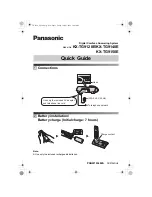
Technical Manual & Parts Lists
5
Important Notices
Reporting and Fighting Fires
Read the instructions posted in the factory with regard to reporting fires and the emergency exits. Make
sure you know exactly where the fire extinguishers and sprinkler systems are located and how they are
operated. Pass on the corresponding information to the firemen when they arrive. Ensure there are
enough signs to avoid fire hazards.
The following fire extinguishers may be used:
- Dry powder extinguishers, ABC fire-extinguishing powder.
- Carbon dioxide fire extinguishers to DIN 14461 for electronic components. Great care must be
exercised when using carbon dioxide fire extinguishers in confined, badly ventilated rooms (see DIN
14406 and 14270).
Isolate the machine from the power supply if a fire breaks out. Do not use water on burning electrical
parts until it is absolutely certain that they have been completely disconnected from the power supply.
Burning oils, lubricants, plastics and coatings on the machine can give off gases and vapors that may be
harmful to your health.
A qualified person should be consulted to repair the damage after a fire.
Electrical Power Supply
Before undertaking any maintenance or repair work on the machine, switch off the
electrical power to the machine at the main source and secure it with a padlock so
that it cannot be switched on again without authorization.
In practice, this may mean that the technician, electrician and operator all attach
their own padlock to the master switch simultaneously so that they can carry out
their work safely. Locking extension plates should be available for multiple locks if
required. The primary purpose for a lockout/tagout procedure is to protect workers
from injury caused by unexpected energizing or start-up of equipment.
Energy sources (electrical/pneumatic/hydraulic, etc.) for the equipment shall be turned off or
disconnected and the switches locked or labeled with a warning tag. It is the responsibility of the
employer to establish control procedures. Follow lockout/tagout procedures before, setup and/or any
service or maintenance work is performed, including lubrication, cleaning or clearance of jams.
Caution: The machine is still not completely de-energized even when the master
switch is off.
- Electricity - The machine is always isolated from the electrical power supply whenever the master
switch has been switched off. However, this does not apply for the power supply in the control cabinet,
nor for equipment that does not draw its power via the master switch.
- Pneumatic / hydraulic energy - Almost all our machines carry compressed air. In addition to switching
off the master switch, the air supply must also be disconnected and the machine checked to ensure it is
depressurized before starting any work on the machine; otherwise the machine may execute
uncontrolled movements.
Summary of Contents for 1330E
Page 2: ......
Page 5: ...Technical Manual Parts Lists ...
Page 16: ...Technical Manual Parts Lists 11 ...
Page 18: ...Technical Manual Parts Lists 13 ...
Page 22: ...Technical Manual Parts Lists 17 ...
Page 24: ...Technical Manual Parts Lists 19 ...
Page 26: ...Technical Manual Parts Lists 21 ...
Page 28: ...Technical Manual Parts Lists 23 ...
Page 30: ...Technical Manual Parts Lists 25 ...
Page 34: ...Technical Manual Parts Lists 29 ...
Page 40: ...Technical Manual Parts Lists 35 ...
Page 44: ...Technical Manual Parts Lists 39 ...
Page 45: ...Technical Manual Parts Lists 40 4003 IS3WT2 Thread Break Sensor 125715A ...
Page 46: ...Technical Manual Parts Lists 41 1330 PD Pneumatic Diagram 125289B ...
Page 47: ...Technical Manual Parts Lists 42 1347MA PD Pneumatic Diagram 1347MA 125296B ...
Page 48: ...Technical Manual Parts Lists 43 1330 WD Wiring Diagram 125288B ...
Page 49: ...Technical Manual Parts Lists 44 1347MA WD Wiring Diagram 125297B ...
Page 50: ...Technical Manual Parts Lists 45 1330E WD Wiring Diagram 125825C ...











































